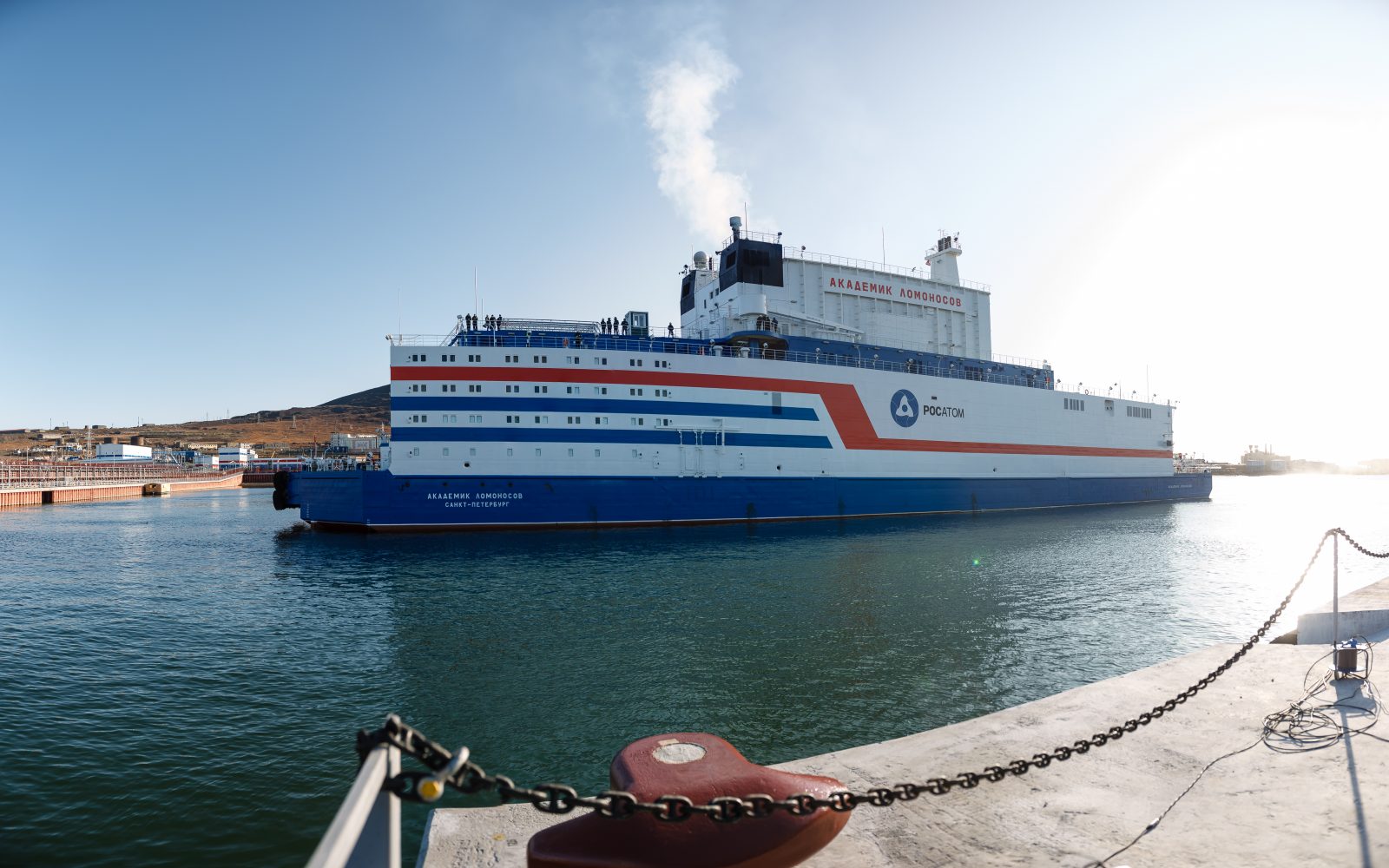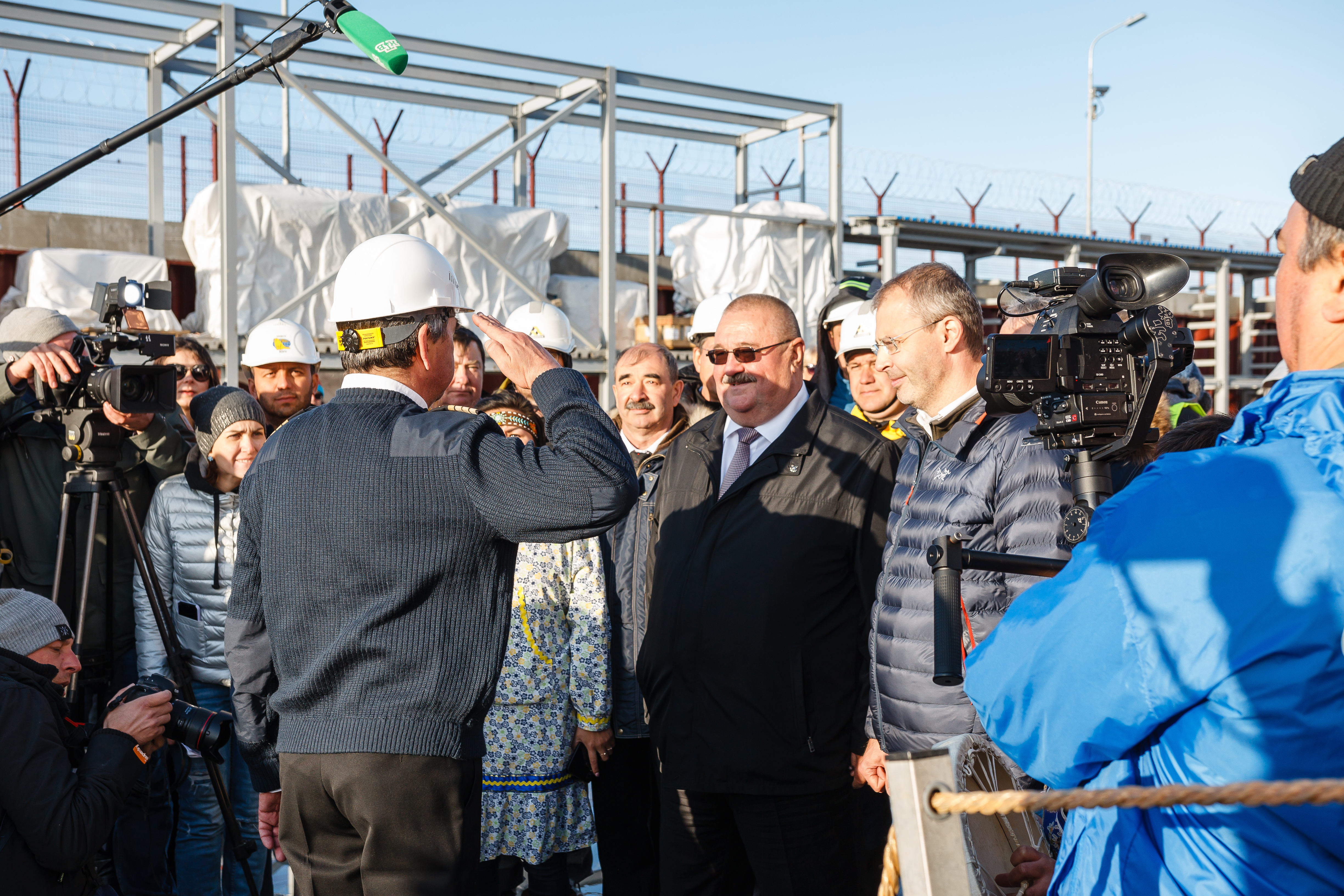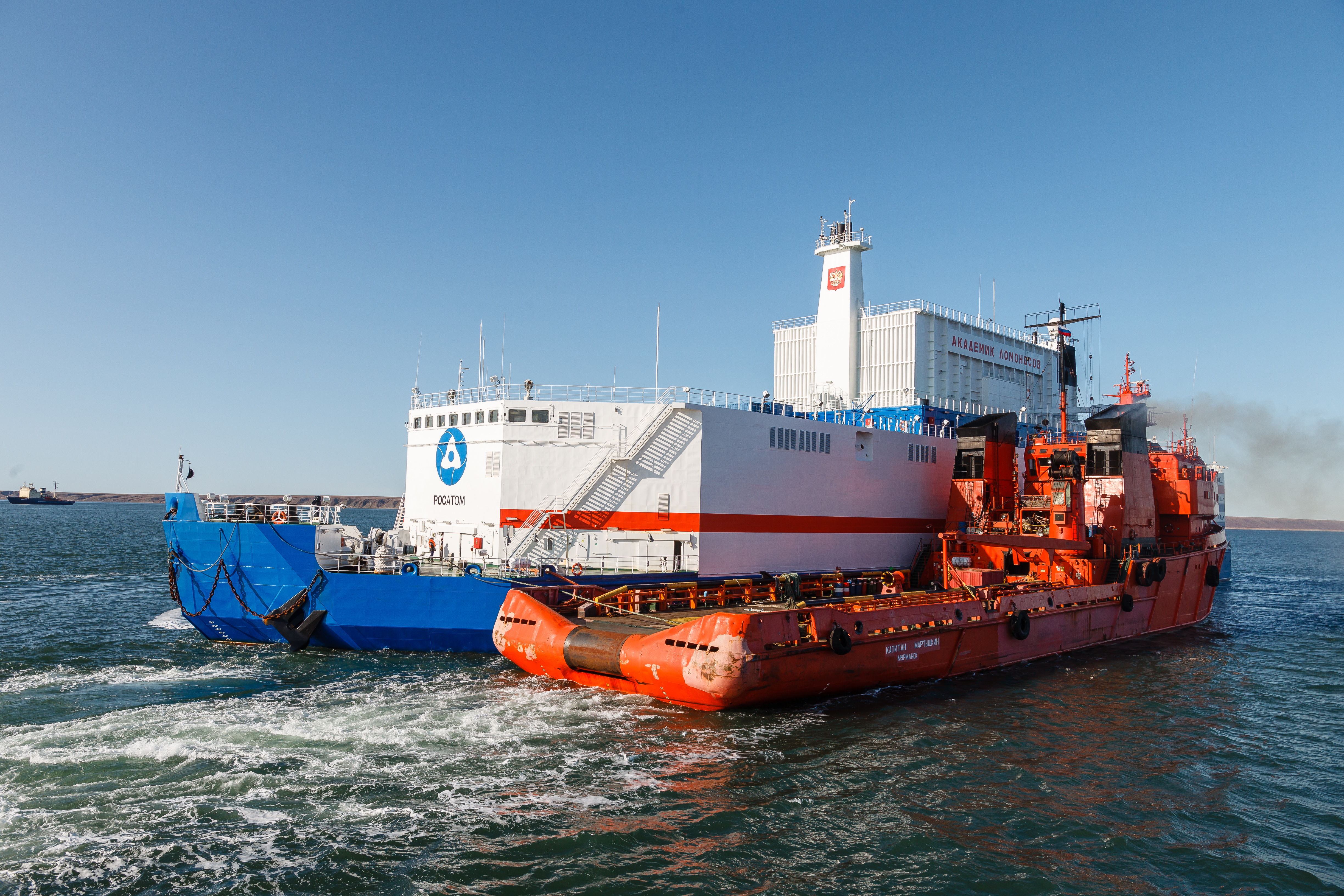
March to Pevek
back to contentsThree ice-class ships escorted the floating nuclear power unit (FNPU) along the Northern Sea Route. The Dikson icebreaker was towing the unit; the Kapitan Martyshkin tugboat was holding it back when needed, while the Yasny tugboat was following the convoy as a standby vessel.
The FNPU departure ceremony was attended by Rosatom’s Director General Alexey Likhachev, managers of the companies involved in the construction of Akademik Lomonosov, representatives of the federal authorities, and regional officials from the Murmansk Region and the Chukotka Autonomous Area. Experts from Bellona Foundation, an international environmental organization, also kept a close eye on the vessel’s departure.
“The vessel is safe. It was designed for unrestricted navigation,” Dmitry Alekseyenko, RosEnergoAtom’s Deputy Director for Floating Nuclear Power Stations, assured the audience.
The journey lasted 18 days a plan of 15 to 45 days. There are 74 people currently working on Akademik Lomonosov. Their task is to maintain the reactors in a subcritical state, monitor the equipment performance and ensure that the facility functions safely. These people belong to Shift 1 and will be replaced with Shift 2 in Pevek in early October. A total number of station’s personnel is 375.
Akademik Lomonosov was moored to a mole in the Pevek harbor with a special shoring device consisting of two pairs of rigid mooring hawsers attached to the starboard side of the vessel. Each hawser is made of a long boom and a set of shock absorbers. The mole protects the floating nuclear power plant from northern storms, pressure ridges and a fierce south wind that falls from the hills and sweeps through the Pevek harbor, blowing off the snow and damaging the buildings. The mole’s design provides for withstanding high winds of up to 50 m/s. “There was no damage from southerns [wind] for the entire two years of mole construction. Yesterday, a southern wind blew again and the structures remained intact,” Vitaly Trutnev, RosEnergoAtom’s Director for Floating Nuclear Power Stations said.

The floating nuclear power unit is designed to withstand 7 to 8 magnitude earthquakes, 45 m/s winds, explosions (for example, an explosion of a 600-ton fuel tanker with a maximum explosion pressure of 650 kPa), a direct lightning strike, and even the crash of an 11-ton aircraft.
The FNPU will soon replace two power plants, Chaun thermal power plant and Bilibino nuclear power plant. “The thermal power plant in Pevek, which was built ages ago, will be shut down. The main thing, though, is that it is coal-fired. Thus, coal will no longer be used as a fuel in Chukotka. This will help us cut carbon emissions to zero,” Sergey Ivanov, Presidential Plenipotentiary Representative for Environmental Protection and Transport commented. The new plant will also cut electricity tariffs by 75% (from USD 0.25 down USD 0.094 per kW).
The Chaun thermal power plant generates 30 MW of electricity and 99 Gcal/h of thermal power, but according to the estimates, its capacity utilization does not exceed 25%. The Bilibino nuclear power plant has an installed power capacity of 48 MW and thermal capacity of 66 Gcal/h. However, its current power and thermal capacities were brought down to 36 MW and 49.5 Gcal/h respectively as one of its power units was shut down. As a comparison, the installed power and thermal capacities of the floating nuclear power plant are 70 MW and 146 Gcal/h respectively.
Electric power will be transmitted via cables laid on a beam between the floating nuclear power plant and the mole. Thermal power will be delivered through four flexible pipelines, which are capable of functioning even in heavy sea. The cables and pipes run through a flyover that connects the mole and the shore where they are connected to the onshore power grids and hot water pipelines.

The floating nuclear power plant will be refueled on the spot every three to four years, with spent fuel to be kept on the FNPU. Every 12 years, it will be towed to a shipyard for intermediate maintenance. The facility is designed for a service life lasting three such cycles, or 36 years in total (40 years, considering the periods of transportation).
During the maintenance periods, the power shortage will be compensated by two 18 MW diesel generators that are being designed at the moment. They will be installed on an already existing site near the onshore infrastructure for Akademik Lomonosov.
The commissioning of the floating nuclear power plant will help reaching two vital goals. The first goal is to ensure a reliable supply of sustainable and cheap power and heat to Pevek and Bilibino and support small-scale mining projects and, more importantly, the construction of a mining and processing facility at the Peschanka gold and copper deposit. The latter is of special importance to the authorities of the Chukotka Autonomous Area and Magadan Region. The second goal is to showcase the efficiency of the engineering solutions and transportation technologies used in construction and operation of the floating nuclear power plant, thus confirming that it is a field-proven solution.




